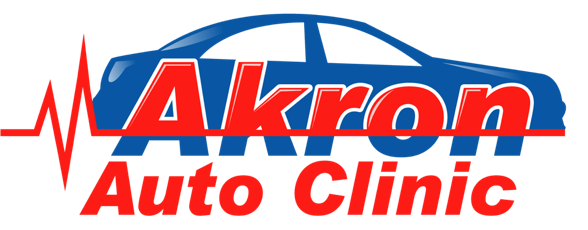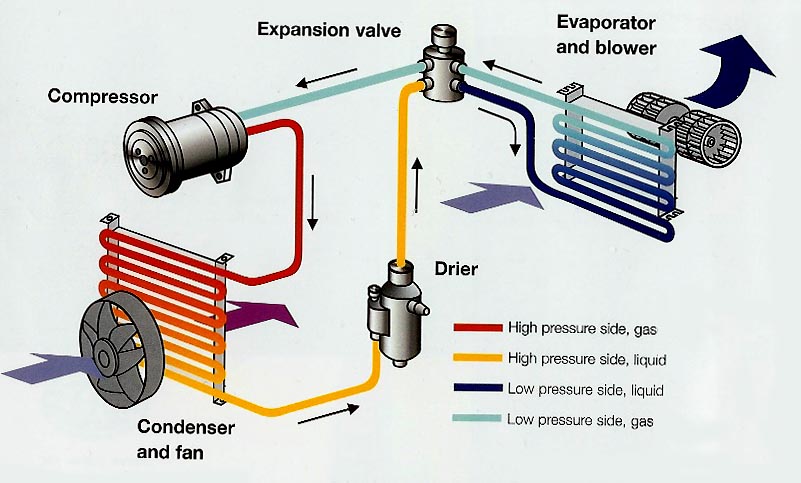Air Conditioning
The A/C system is made up of five main components to make the air in your car blow cool: The compressor, condenser, receiver-dryer, expansion valve, and evaporator. The A/C system is also made up of two sides, the high-pressure side and low-pressure side. The high-pressure side contains the compressor, condenser, and receiver-dryer. The low-pressure side contains the expansion valve and evaporator.
High-Pressure Side
Compressor - The compressor is a pump that’s driven by your cars belt. When the refrigerant enters into the compressor, it is in a low-pressure gas. When the gas is inside the compressor it compresses the gas into a high pressure and forces it out to the condenser.
Condenser - The condenser is there to radiate heat out of the system. The refrigerant enters the condenser as a pressurized gas from the compressor. The pressurizing of the gas and moving it to the condenser creates heat, but by air flowing through the condenser it cools down the refrigerant until it forms into a liquid again. The high-pressure refrigerant is now a liquid and is sent to the receiver/drier.
Receiver-Drier - When the refrigerant moves from the condenser, the liquid goes through the receiver-dryer, which contains a moisture absorber that removes unwanted water from the refrigerant. The receiver-dryer then removes any water that has entered the system. If the water stays in the system it can form into ice crystals, which can damage the a/c system.
Low-Pressure Side
Expansion Valve - The expansion valve is where the system changes from the high-pressure side to the low-pressure side. The high-pressure liquid moves through the receiver-dryer to the expansion valve, where it then expands, cooling the refrigerant. When the refrigerant expands it reduces the pressure, so it can go through the evaporator. The expansion valve regulates the flow of refrigerant, so the refrigerant can flow steadily. Some vehicles have an orifice tube instead of an expansion valve, but it acts as the same as an expansion valve by lowering the pressure and cooling the refrigerant before enters the evaporator.
Evaporator - Refrigerant enters the evaporator as a cold, low-pressure liquid. The temperature inside the car is enough to make the refrigerant in the evaporator boil and become a gas again. When the refrigerant is in a gas form can absorb a lot of the heat. The gas then moves out of the evaporator taking the heat with it. A fan blowing on the evaporator blows cool air into the car. The refrigerant then goes back to the compressor, where it starts the whole process all over again.








